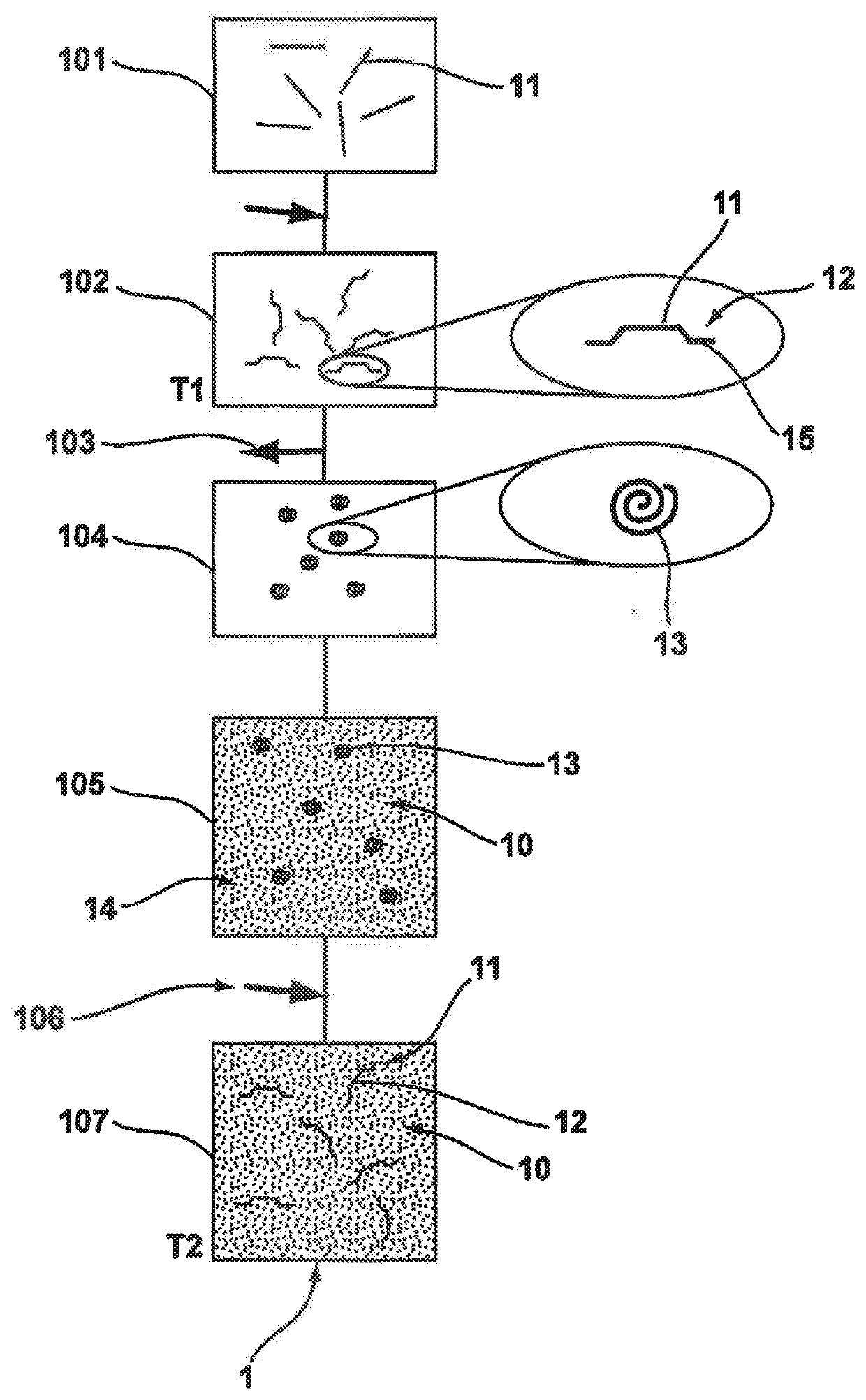Microfiber-reinforced high-strength concrete
a technology of reinforced concrete and microfiber, which is applied in the direction of manufacturing tools, ceramic shaping apparatus, etc., can solve the problems of disadvantageous deformation of concrete rheological properties, and inability to meet the requirements of concrete production,
- Summary
- Abstract
- Description
- Claims
- Application Information
AI Technical Summary
Benefits of technology
Problems solved by technology
Method used
Image
Examples
Embodiment Construction
[0017]Further measures improving the invention will be shown in more detail below together with the description of a preferred embodiment of the invention with reference to the only FIGURE. There is shown:
[0018]The FIGURE is a schematic sequence of the steps of the method in accordance with the invention of manufacturing a microfiber-reinforced concrete.
DETAILED DESCRIPTION OF THE DRAWING
[0019]The FIGURE shows a sequence of a plurality of method steps 101 to 107 that describe a method in accordance with the invention of manufacturing a microfiber-reinforced concrete 1.
[0020]The method begins with the provision 101 of fiber elements 11 and the heating of the fiber elements 11 to a temperature above a transition temperature. The transition temperature of the fiber elements 11 from a shape memory alloy is the temperature above which the shape memory alloy remembers an originally trained geometrical shape in that the component composed of the shape memory alloy returns into this remembe...
PUM
| Property | Measurement | Unit |
|---|---|---|
| Temperature | aaaaa | aaaaa |
| Temperature | aaaaa | aaaaa |
| Temperature | aaaaa | aaaaa |
Abstract
Description
Claims
Application Information
 Login to View More
Login to View More - R&D
- Intellectual Property
- Life Sciences
- Materials
- Tech Scout
- Unparalleled Data Quality
- Higher Quality Content
- 60% Fewer Hallucinations
Browse by: Latest US Patents, China's latest patents, Technical Efficacy Thesaurus, Application Domain, Technology Topic, Popular Technical Reports.
© 2025 PatSnap. All rights reserved.Legal|Privacy policy|Modern Slavery Act Transparency Statement|Sitemap|About US| Contact US: help@patsnap.com

